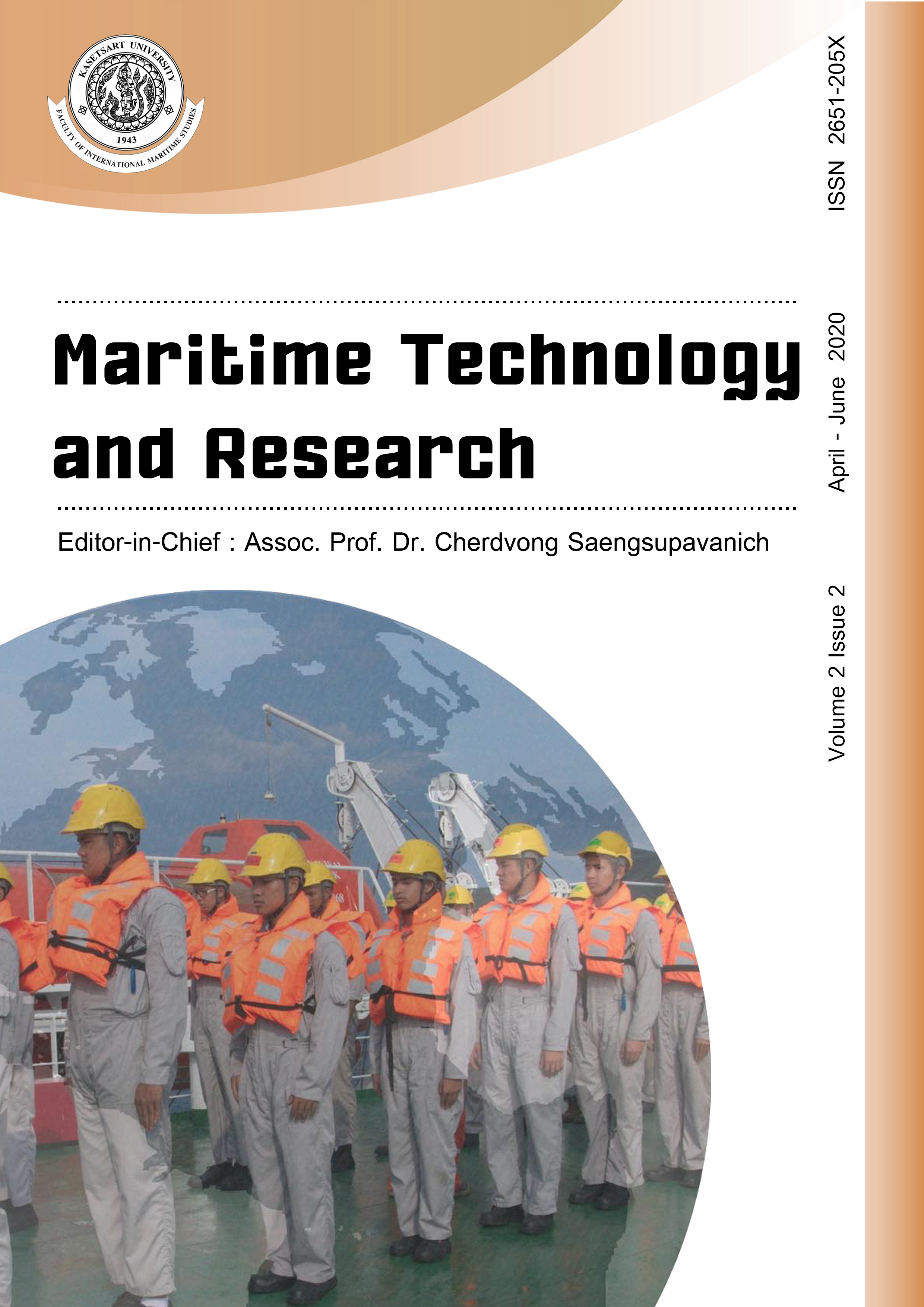A study of the suitability of marine transportation personnel using brainwave analysis and virtual reality technology
DOI:
https://doi.org/10.33175/mtr.2020.218954Keywords:
Brainwaves, Marine transportationAbstract
This work aims to investigate the possibility of reducing the occurrence of marine accidents by avoiding the unsuitability of marine transportation personnel. Recognizing that a majority of marine accidents arise from the improper reactions of transportation workers, we propose to evaluate the suitability of transportation personnel with the aid of brainwave analysis and Virtual Reality (VR) technology. By analyzing the brainwaves of a person facing operation situations simulated via VR, it may be possible to predict his/her responses in the situations and, thereby, determine if he/she is suitable to be involved in transportation work. Our preliminary experiments show that the brainwave analyses do have the capability of evaluating the appropriateness of the decisions made by a person when he/she faces operation situations.
References
Basu, A., & Johnsen, K. (2014). Ubiquitous virtual reality To-Go. In Proceedings of the 2014 IEEE Virtual Reality. USA: Minneapolis, pp. 161-162. doi:10.1109/VR.2014.6802101
Chalakorn, J., & Kochiu, W. (2019). Analysis brainwaves by music listening for attention deficit hyperactivity disorder (ADHD) students. In Proceedings of the Symposium on Digital Life Technologies 2019. Taiwan: Kaohsiung.
Dan, L., Lacrama, D., & Fera, T. (2009). Virtual reality. In Proceedings of the 4th International Conferences Actualities and Perspectives on Hardware and Software. Romania: Timisoara.
Freina, L., & Michela, O. (2015). A literature review on immersive virtual reality in education: State of the art and perspectives. In Proceedings of the International Scientific Conference eLearning and Software for Education. Romania: National Defence University.
Howard-Jones, P., Ott, M., Leeuwen, T. V., & Smedt, B. D. (2014). The potential relevance of cognitive neuroscience for the development and use of technology-enhanced learning. Learning, Media and Technology, 40(2), 131-151. doi:10.1080/17439884.2014.919321
Huang, Y. C., & Han, S. R. (2014). An immersive virtual reality museum via second life. In Proceedings of the International Conference on Human-Computer Interaction. Springer. pp. 579-584. doi:10.1007/978-3-319-07857-1_102
Jennett, C., Cox, A. L., Cairns, P., Dhoparee, S., Epps, A., Tijs, T., & Walton, A. (2008). Measuring and defining the experience of immersion in games. International Journal of Human-Computer Studies, 66(9), 641-661. doi: 10.1016/j.ijhcs.2008.04.004
Methee, W. (2014). Health today magazine. 1st TRE Philippines training OCCI global. Philippines: Ortigas.
Surasachai, D., Varinya, P., & Lai-Chung, Lee. (2019). Analysis methods using virtual reality (VR) media for Pediatrician’s treatment. In Proceedings of the Symposium on Digital Life Technologies 2019. Taiwan: Kaohsiung.
Walter, W. G. (1964). Slow potential waves in the human brain associated with expectancy, attention and decision. Archiv für Psychiatrie und Nervenkrankheiten, 206(3), 309-322. doi:10.1007/BF00341700
Webster, R. D. (2014). Corrosion prevention and control training in an immersive virtual learning environment. University of Alabama at Birmingham, Graduate School, pp. 1-150.
Downloads
Published
How to Cite
Issue
Section
License
Copyright: CC BY-NC-ND 4.0






